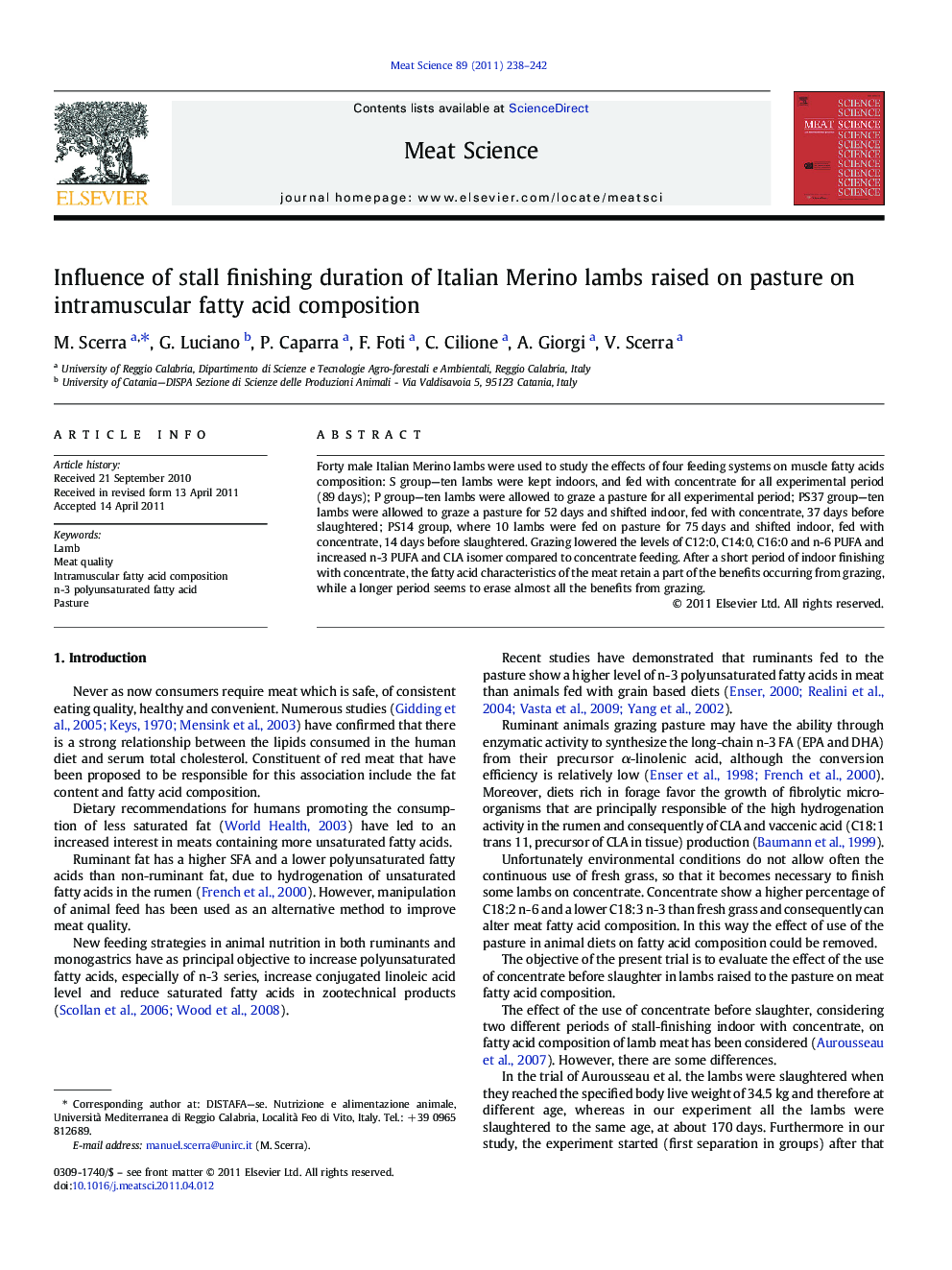| Article ID | Journal | Published Year | Pages | File Type |
|---|---|---|---|---|
| 2450409 | Meat Science | 2011 | 5 Pages |
Forty male Italian Merino lambs were used to study the effects of four feeding systems on muscle fatty acids composition: S group—ten lambs were kept indoors, and fed with concentrate for all experimental period (89 days); P group—ten lambs were allowed to graze a pasture for all experimental period; PS37 group—ten lambs were allowed to graze a pasture for 52 days and shifted indoor, fed with concentrate, 37 days before slaughtered; PS14 group, where 10 lambs were fed on pasture for 75 days and shifted indoor, fed with concentrate, 14 days before slaughtered. Grazing lowered the levels of C12:0, C14:0, C16:0 and n-6 PUFA and increased n-3 PUFA and CLA isomer compared to concentrate feeding. After a short period of indoor finishing with concentrate, the fatty acid characteristics of the meat retain a part of the benefits occurring from grazing, while a longer period seems to erase almost all the benefits from grazing.
► The objective of the trial is to evaluate the effect of concentrate after pasture on meat fatty acids of lambs. ► The study was carried out on 40 lambs divided in 4 groups: P, pasture, S, concentrate, PS37 and PS14. ► Meat from PS14 lambs retain part of the benefits occurring from grazing but not meat from PS37 lambs.
